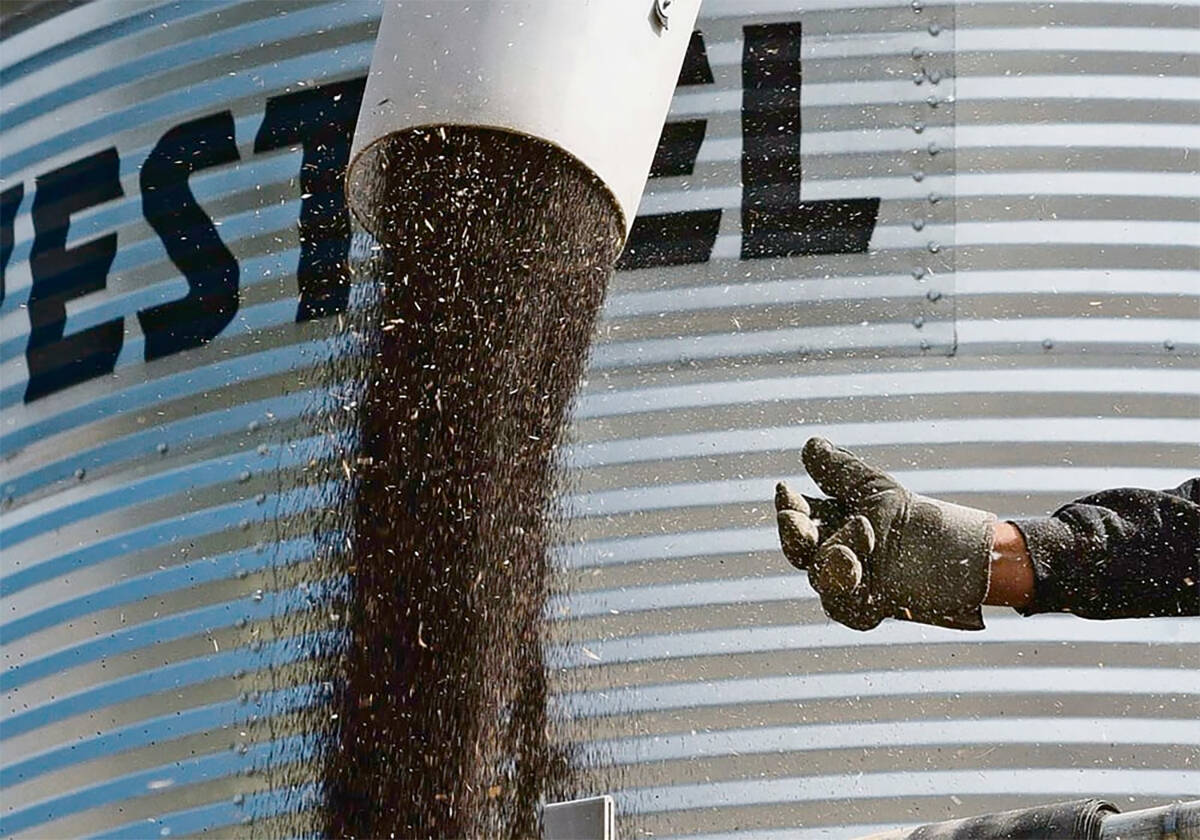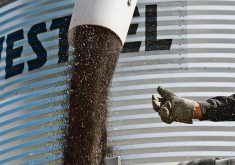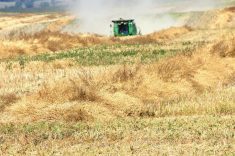A grain industry plan to force flax growers to abandon the tradition of planting farm-saved seed isn’t sitting well with producers.
“There are lots of frustrations out there, there is no question about that,” said Allen Kuhlmann, chair of the Saskatchewan Flax Development Commission.
“One of the things that’s concerning people is some of the big buying companies like Viterra, Richardson and Cargill are saying you’re going to have to grow (flax) from certified seed or else they’re not going to buy it.”
Read Also

Farmers urged to be grain-safe this fall
Working around grain bins comes with risk, from farmers falling to drowning in grain: Experts have five tips to help avoid grain-related accidents this harvest.
Barry Hall, president of the Flax Council of Canada, confirmed that is where the industry is heading.
“That is the concept that is in the works right now, that the companies are going to require that the crop be produced from certified seed that has been tested,” he said.
Dale Adolphe, executive director of the Canadian Seed Growers Association, said the grain industry sees the plan as the best bet for restoring trade with Europe and other affected markets like Brazil and Japan in the wake of an incident in which Triffid, an unregistered genetically modified flax variety was found in flax shipments.
“People are grasping for solutions and we may be one of them,” he said.
Adolphe spent his first workday of 2010 drafting a letter to seed growers and flax breeders telling them to test their seed for the presence of CDC Triffid in preparation for the new regime.
The certified seed supply has already been cleared by the Canadian Food Inspection Agency but that was at a 0.1 percent tolerance level.
Since then, Canada signed a trade protocol with Europe establishing a more stringent 0.01 percent tolerance level.
Three-quarters of the flax grown in Canada comes from farm-saved seed. Kuhlmann estimated that switching those acres to certified seed would cost growers $15 million annually.
“I’m not sure that’s the solution.”
Producers can make “all kinds of arguments” that having their farm-saved seed tested to be free of Triffid should be as good as testing certified seed, said Kuhlmann, a flax grower from Vanguard, Sask.
But Adolphe is confident certified seed will prove cleaner than farm-saved seed, which has proven to be littered with Triffid contamination.
He said certified seed has a rigorous inspection process in place, so if the samples come back negative, it’s likely the entire certified system is Triffid-free.
However, if the tests show the certified system is contaminated, there will be no advantage of going that route.
Adolphe also questioned Kuhlmann’s $15 million cost estimate for farmers to switch to certified seed. He estimated it would cost $3.5 million to switch one million acres of flax to certified seed, which sells for twice the price of common seed.
Early industry forecasts call for 900,000 to 1.3 million acres of flax in 2010.
“There is likely enough certified seed around to do three-quarters of a million to a million acres,” Adolphe said.















